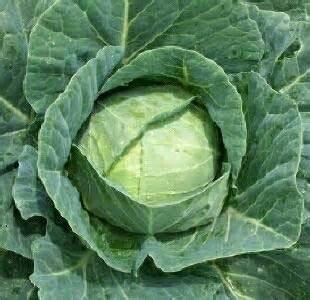Unused stories
Growing In Your Garden Now - Cabbage

Cabbage is a hardy, easy-to-grow cool weather vegetable with several attributes: it has versatile and delicious uses in the kitchen, it is highly nutritious, and it stores well. The round culinary cabbage (Brassica oleracea var. capitata) is in the Brassicacea (mustard) family. Within this family is the species, Brassica oleracea –cruciferous vegetables in this species are called “cole crops” and, with cabbage, include broccoli, cauliflower, Brussels sprouts, collard greens, kohlrabi, and kale.
Cabbage can be direct-seeded to mid-August and transplanted through September. On average, cabbage takes 70 to 100 days from planting to harvest. However, some varieties, can take as long as 120 days to mature.
The California Master Gardener Handbook recommends a number of cabbage varieties:
- Early varieties (less than 100 days from time to planting to harvest) include: ‘Stonehead,’ ‘Early Jersey Wakefield’ (a conical green variety), ‘Darkri’ (small heads), ‘Golden Acre’ and ‘Copenhagen Market’.
- Late varieties (more than 100 days from time to planting to harvest) include: ‘Premium Flat Dutch,’ ‘Danish Roundhead Red,’ ‘Ruby Ball Hybrid’ and ‘Red Head.’ Savoy cabbages include: ‘Savoy Ace’ and ‘Savoy King’.
- Stonehead,’ ‘Ruby Ball Hybrid,’ ‘Red Head,’ and the Savoys resist most diseases.
Cole crops like well-drained soil. If you have shallow hardpans, compacted layers, or high water tables, a raised vegetable bed may be necessary. For four persons, plant 10 - 15 cabbage plants. With so many early and late varieties, choose more than one variety and set out a few plants every week to stagger production. You may interplant cabbage with other cole crops as they have similar cultural requirements. During a dry month, water deeply to encourage deep rooting. Avoid wetting foliage with overhead watering to deter disease.
To avoid build up of diseases and insect pests, it is best not to plant cole crops in the same spot year after year. Easy pest control includes hand-picking cabbage worms and loopers or using Bt; applying a cutworm collar around seedlings; or shooting a strong steam of hose water to knock off aphids. During cool weather, pests are not as much as a problem.
Like all cole crops, cabbages should be harvested as soon as they reach maturity. Leaving them in the garden too long may result in split heads. Harvest when the cabbage heads are quite firm and well filled. If you can compress the head and it feels very loose, it is not mature. Some cabbages (especially ‘Savoy’ – also called winter cabbage) can be kept reasonably well in the field during cool weather, and they also store well after harvesting. If a hard freeze is predicted for your area, harvest the cabbage beforehand. Under optimal conditions, early crop cultivars can be stored 3 - 6 weeks, while late crop cultivars can be stored for up to 6 months. Do not allow the cabbage to freeze.
By Sonoma County Master Gardener Stephanie Wrightson
